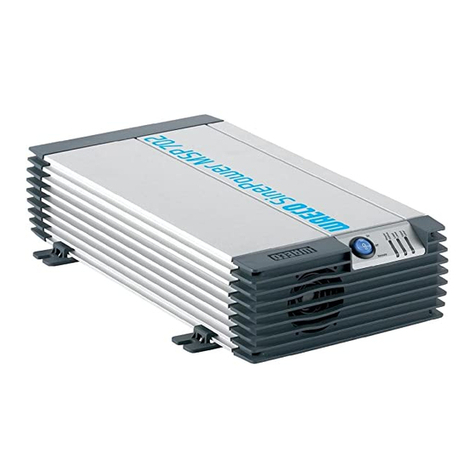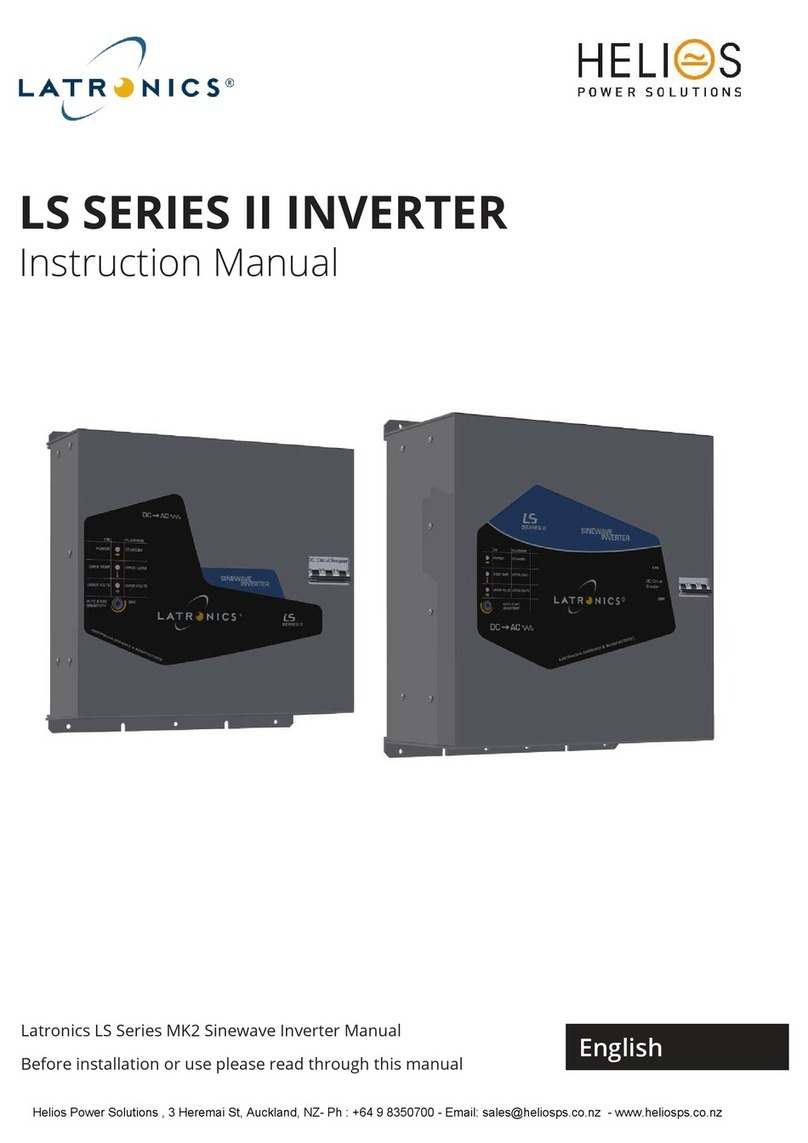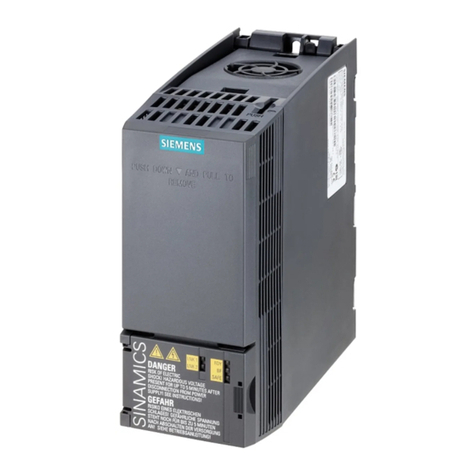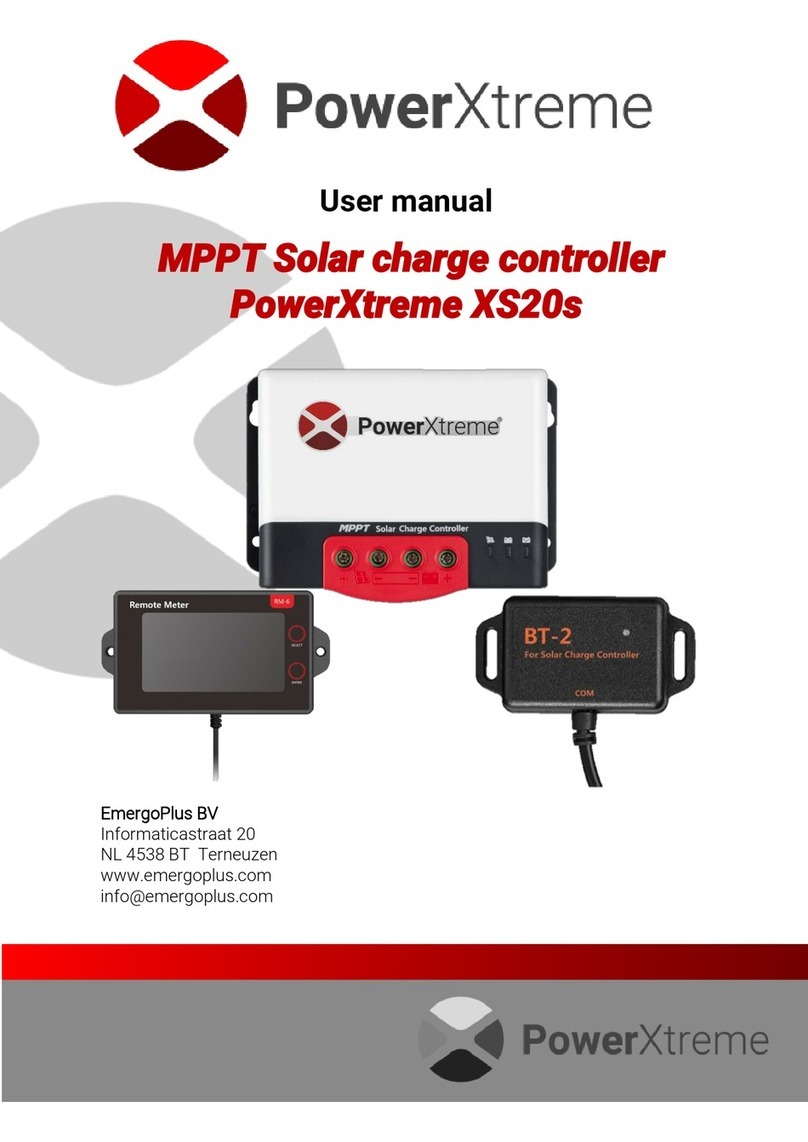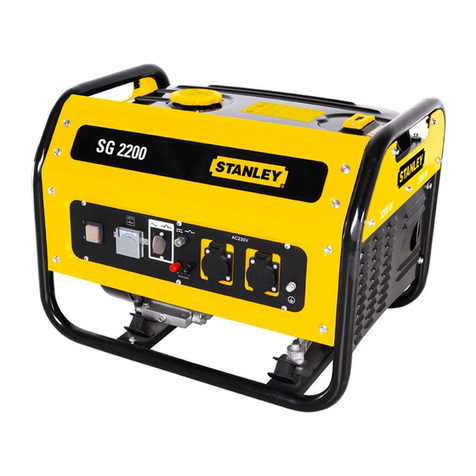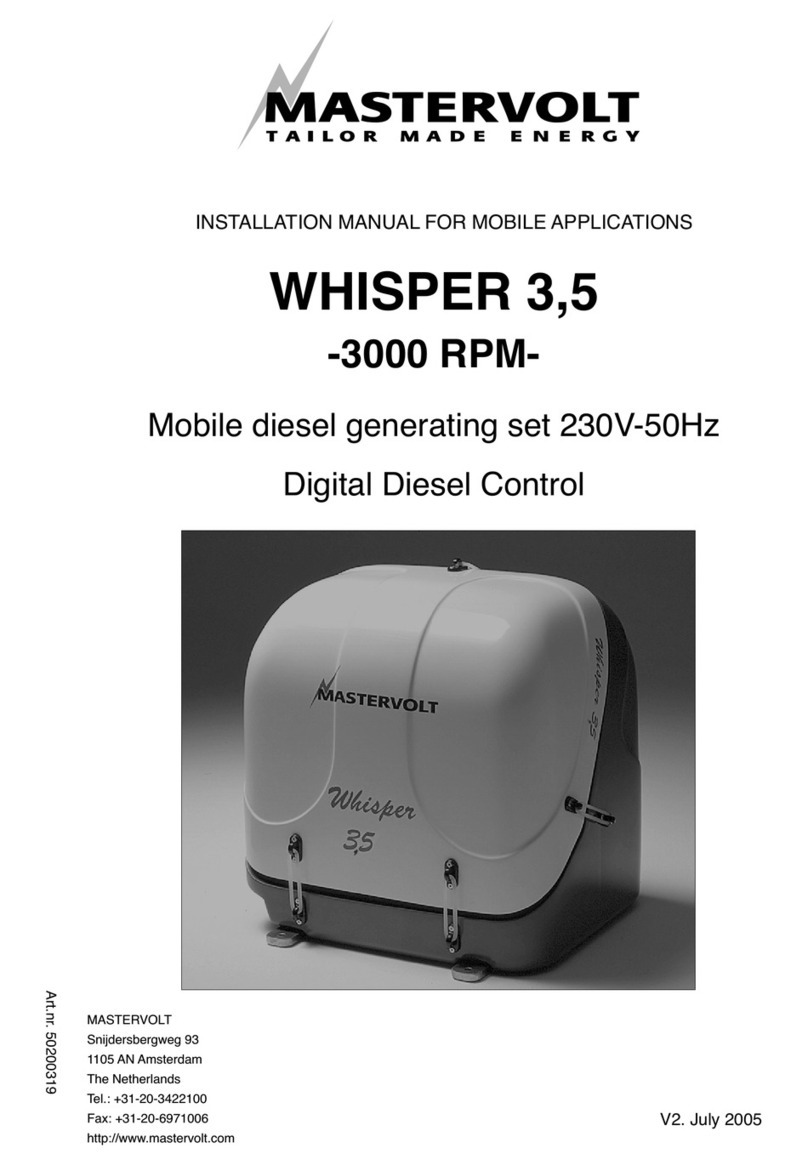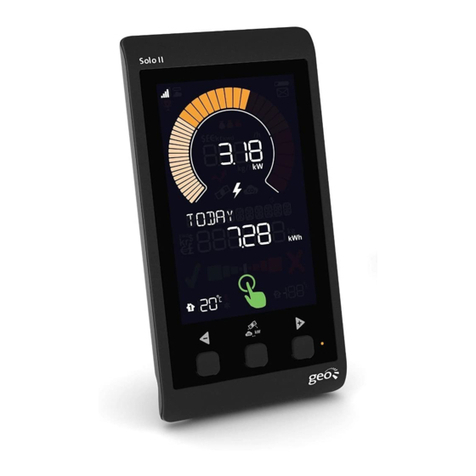Digiscan Labs DNG-2300 User manual

USER MANUAL
DNG-2300

2
INTRODUCTION
ACOUSTIC EAVESDROPPING
Thank you very much for purchasing the DNG-2300 digital noise generator. The DNG-2300 is
designed to prevent listening though devices that cannot be detected by conventional
countermeasures and installed around the perimeter of a room – wired wall microphones, contact
microphones, AC outlet transmitters and window systems based on the reflection of
laser/infrared/microwave beams. It is an excellent addition to high level countermeasures.
It is well-known that sound distributes though walls, doors, windows and other constructions. In
some materials sound travels even better than through air. For example, water is a good conductor
and a heating system can pass a conversation out of a room. Eavesdroppers take advantage of this
with the use of contact microphones. These microphones pick up the vibrations from the air ducts,
plumbing, structures, walls, windows, doors, floors, ceilings and more. The microphones may not
be in the same room as the conversation, but may be several floors or rooms away attached to a
pipe or other fixture.
The DNG-2300 can render these devices useless. It produces non-filterable acoustic noise which is
transferred to constructions by transducers and speakers. REI’s TRN-2000 is the recommended
transducer for use with the DNG-2300. It has optimal power parameters and can be set on different
types of surfaces. The TRN-2000 injects most of its power into surfaces while only a tiny part of
the noise gets inside a room. This does not force people to speak louder. The TRN-2000 transducer
can be supplied with adapters for mounting on walls, ceilings, windows, etc.
The speaker OMS-2000 can also be used with the DNG-2300. It does not inject the noise into the
surfaces but radiates it into surrounding space. The OMS-2000 is usually used in air ducts, ceiling
tiles, etc.
TRULY RANDOM NOISE
The DNG-2300 consists of 3 independent white noise digital generators. “White” means that the
noise is fully random and is equally distributed along the voice spectrum. This distribution
provides complete resistance against the filtering of a conversation. Another feature of white noise
is its unpredictability i.e. there is no method to wipe it out from a recorded conversation.
VOICE MASKING
Men’s and women’s voices consist of lots of frequencies simultaneously produced during speech.
These frequencies lie between 100 Hz and 6000 Hz. Listening devices usually have a narrower
range mostly because of size limitations, the scheme of the device and battery time. The DNG-
2300 has a range of 250-5000 Hz which is optimal to cover all types of voices and suppress all
listening devices.
OPERATION
The DNG-2300 uses a combination of transducers and speakers placed strategically throughout a
target area to create a blanket of masking noise that covers private conversations from
eavesdropping. Each transducer utilizes adapters for mounting to a variety of surfaces such as
walls, windows, ductworks, plumbing, etc. The three separate channels allow the user to tailor the
noise for separate materials, allowing greater flexibility and increased protection.

3
LOOPBACK INPUT
The DNG-2300 has an input LOOPBACK which allows easy and fast tuning to the necessary level
of noise. Optional probe microphone DNG-MIC and probe stethoscope DNG-STET are used for
the required measurements.
SUPPLIED SET
The DNG-2300 is supplied with AC power cable and user manual. The TRN-2000 and the OMS-
2000 are sold separately. Their quantity depends on the room size and the situation. The probe
microphone DNG-MIC and the probe stethoscope DNG-STET are also sold separately.
REMARKS REGARDING PREPARATION
This instruction manual covers the installation, wiring, and testing of the DNG-2300. Because the
DNG-2300 protects the perimeter of the target area, devices which may be planted in close
proximity to the target speaker’s voice may not be jammed by the DNG-2300 system. Therefore
prior to the installation of the DNG-2300 it is recommended to perform thorough sweep
accompanied by a physical search.
When performing detection and location the following tools can be used: radio field indicators (bug
detectors), interceptors, frequency counters, counter surveillance probes, spectrum analyzers, etc.
Contact your dealer for help in choosing the necessary tools or ordering a sweeping service.
While the most accessible listening devices can be detected by the mentioned equipment, there are a
lot of devices which can only be found by physical methods: wired microphones, fiber optic
microphones, passive resonators, inactive remote controlled “dormant” devices, or other non-
detectable devices. Therefore a physical search is a very important part of countersurveillance work.
CONTROLS
FRONT PANEL
Figure 1
1. Power switch
2. Level indicator - Channel 1
3. Level indicator - Channel 2/ Level indicator - LOOPBACK input
4. Level indicator - Channel 3
5. Level adjustment - Channel 1

4
6. Level adjustment - Channel 2
7. Indicator switch on/off Channel 3
8. LOOPBACK input
9. Level adjustment - Channel 3
REAR PANEL
Figure 2
1. Output terminals – Channel 1 & 2
2. Input switch on/off Channel 3 (contacts open – channel on, the contacts are closed – channel
off)
3. Output terminals – Channel 3
4. AC power input (220V for European version)
TRANSDUCER INSTALLATION
Since the DNG-2300 uses the TRN-2000, which is produced for the ANG-2000/2200, it is
recommended to follow the instructions stated in the User Manual of the ANG-2000/2200. For your
convenience, they are repeated below.
INTRODUCTION
An ideal installation would be accomplished during construction or remodeling where sensitive
points in the structure can be protected with transducers built into the building's structure. If this is
not possible, the transducers can be placed directly onto wall surfaces. If visual appearance is a
problem, the transducers should be disguised or covered accordingly.
QUANTITY REQUIRED
Determine the quantity of transducers needed by these recommendations:
WALLS - One placed every eight linear feet, centered between floor and ceiling. Mount on or within
6 inches of a stud.
FLOOR and CEILING - One centered on every 64 square feet. (Use the OMS-2000 speaker for drop
ceiling.)
WINDOWS - One placed on every major pane of glass within 6" of the corner.
DOORS - One placed adjacent to the center hinge on the doorframe.
Note: "Shielded Screen Rooms" are shielded against R.F. devices transmitting out of the room,

5
but not necessarily against acoustic leakage. During Construction or remodeling of a screen
room, the transducers can be mounted on the frame members, and then acoustic insulation and a
decorative panel can be installed to the inside wall surface. This will help isolate the noise
generated from the room as well as decrease the acoustic leakage out of the room.
MOUNTING
Three basic mounting methods are suggested for transducers: Direct Screw for solid surfaces;
Hollow Wall Anchor for drywall (sheetrock), plaster, and other soft or brittle materials; and Plastic
Disk for flat, smooth surfaces like glass and plastic.
Attn: Always mount the transducer before connecting the wiring. The tabs supplied with each
transducer easily push on to the lugs. This eliminates twisting the wire.
Direct Screw Mounting
A "Screw Adapter" is provided with a dual head. One end has 10-24 machine screw threads for the
transducer; the other has course tapered threads to be used in solid materials such as wood.
If the surface is a solid material such as ply wood, studs, or wood beams, the transducer can be
mounted directly.
1. Thread Screw Adapter into the transducer.
2. Drill a 1/8" pilot hole in the wall
3. Screw the transducer clockwise into the pilot hole until it is flush to the surface. DO NOT
TIGHTEN EXCESSIVELY. (Figure 3)
If the material is soft such as ceiling tile or drywall, use a piece of plywood and adhesive to attach
the transducer to the softer material.
1. Drill a l/8th pilot hole in the center of a 3-inch square (for drywall) to a 12-inch square (for ceiling
tile) piece of 3/8" or 1/2" plywood.
2. Attach plywood to the surface with adhesive or epoxy glue.
3. Thread the Screw Adapter in the transducer, (figure 3)
4. Screw the transducer clockwise into the pilot hole until it is flush to the plywood. DO NOT
TIGHTEN EXCESSIVELY.
Figure 3
Hollow Wall Anchor Mounting
For walls with fragile surfaces such as drywall, plaster, or thin paneling, the transducer can be
attached with a hollow wall anchor.
1. Use the 10-24-thread size hollow wall anchor included with the transducer. Drill a 7/16" hole and
insert the anchor. Thread the screw until the wall anchor is tight. (figure 4A)
2. Remove the screw from the wall anchor, (figure 4B)
3. Screw the 10-24-threaded rod included with the TRN-2000 into the transducer.
4. Turning the transducer clockwise into the wall fastener, tighten the TRN-2000 until it is firm. DO
NOT TIGHTEN EXCESSIVELY. (figure 4C)

6
Figure 4
Plastic Disk Mounting
The transducer may be attached to plate glass windows or other smooth surfaces using the plastic-
mounting disk. The glass must be firmly mounted to avoid vibration.
la. For temporary mounting, use double-stick tape and press the disk firmly to the clean and dry
surface. (Figure 5)
Figure 5
1b. For permanent mounting, discard the double-stick tape and use a small amount of clear silicone
exterior caulking compound. Place a small thin layer across the disk and press firmly and evenly to
minimize air bubbles. This method provides better coupling for high frequency response. Allow the
adhesive to set as recommend by the manufacturer (usually 24 hours). (figure 6A)
2. Screw the Transducer clockwise onto the plastic disc until firm. DO NOT TIGHTEN
EXCESSIVELY. (figure 6B)
Figure 6
Attention: Be sure not to over tighten the transducer, the plastic insert may be damaged

7
SPEAKER INSTALLATION
INTRODUCTION
Omni Masking Speakers should be placed above the ceiling tiles, in storage rooms that are inside the
target area and do not have transducers installed on the adjacent walls, or within crawl spaces that
do not have protection.
QUANTITY REQUIRED
Determine the number of speakers needed by these recommendations:
Drop/Tiled Ceiling - One centered on every 81 square feet.
Closets/Crawl Spaces - One suspended half the height of the room; centered on every 81 square feet.
MOUNTING
Speakers are usually hung by the cable. The environment in which it is placed is the determining
factor of its height positioning.
Drop Ceiling -Hang the speaker one to two feet above the ceiling tile. (figure 7)
Figure 7
Closets/Crawl Spaces - Place the speaker centered in the space halfway between the floor and
ceiling. (figure 7)
SYSTEM SETUP
The DNG-2300 combats the problem of acoustic leakage by injecting noise onto the surface
perimeter of a target area. Three channels allow the user to group similar perimeter surfaces together
for level control. In large areas, more than one DNG-2300 should be employed.
When diagramming a room for acoustic protection, the following rules are recommended for good
system operation:
Group solid cement/concrete walls and floors on the same channel at full level when necessary.
Group windows and OMS-2000 speakers on the same channel when necessary.
Do not mix speakers in series with transducers. Their impedance is different.
Attention: Damage to your DNG-2300 may occur if improperly wired. Minimum load for channel
1,2 is 3 ohms.
Minimum load for channel 3 is 8 ohms

8
CONNECTIONS
Transducers
Figure 8 shows the three level combinations
for transducers. "Full Level" transducers are
recommended for solid or cement walls,
floors, and ceilings. "1/2 Levels" are used
for typical drywall or less dense surfaces.
"1/2 Levels" and "1/3 Levels" are suggested
for glass panes dependent on size.
Combining levels can be done, but care
should be taken to verify the correct output
volume out of each transducer.
Figure 8
Speakers
Figure 9 shows the three level combinations for the QMS-2000 speakers. "Full Level" is
recommended for large closets and large crawl spaces. "1/2 Level" is used for small crawl spaces,
closets, and ceilings with a large distance between the tile and ceiling. "1/3"Level" is suggested for
very small areas and ceilings with very little space between the tile and the top of the ceiling.
Similarly to the transducers, care should taken if the speaker levels are mixed to ensure that proper
volume is being achieved to all the speakers.
Figure 9
Note: Speakers can be added
until 8 ohms is reached. Control
of the level may become difficult
due to location of the speakers.
The user should use his or her
own judgment when connecting
speakers.
EXAMPLE
Figure 10 is an example diagram
of a typical office setting. The
target room is protected from
adjacent offices, inner building
walls, restroom/janitorial walls,
outside windows, and drop ceilings. The DNG-2300 is setup so that the wall surfaces are all on the
same channel. This allows the equalization of the noise for that particular surface material. The
windows and ceiling have been combined on one channel for simplicity. When combining different
surfaces on the same channel, walls should be kept separate from windows and ceilings.

9
Figure 10
WIRING
Attn: Do not turn on the DNG-2300 until you have completed wiring the transducers as
recommended in this manual.
Route the wiring so that it cannot be pinched, cut, tripped over, or damaged in any way. Connect the
wires to the transducer using the female "quick connect" tabs furnished. Crimp or solder the wire to
the tab.
For lengths of less than 60 feet, use 18-gauge "zip cord" wire. Use 14-16 gauge heavy-duty speaker
cable (sold at audio stores) for longer runs that have impedance of less than 3 ohms. Use the
conductor that is silver o|r has markings on the insulator as the negative wire.
Attn: Each generator output is designed to be separate and isolated. Do not cross output
wiring or allow any wiring to be connected to the building's metal or earth ground.
OUTPUT ADJUSTMENT
The actual noise level required to mask speech is dependent on the square footage and composition of
the surface, the ambient noise, and the general loudness of the conversation to be protected. Under most
situations, the required output level will produce a low to moderate noise level in the target area with
which one can talk comfortably. The actual level required under specific situations can be measured with
optional probe microphone DNG-MIC or optional probe stethoscope DNG-STET.
Transducers
1. Ensure that all the connections are made and the power is on.
2. Place the testing stethoscope DNG-STET on a surface in the protected room.
3. Tune the channel which controls the transducers. If both channels are used by transducers, tune
both of them. First decrease the output level to the minimal position.
4. Increase output level until the LOOPBACK indicator shows the middle reading – the red light
should be on the 10th segment of the bargraph.
5. Put the DNG-STET on other surfaces in the room and check that the LOOPBACK reading is
not less than 10. Increase the level if necessary. Probe all the surfaces in the protected room –
walls, windows, ceilings, etc.
Speakers
1. Ensure that all the connections are made and the power is on.
2. Place the probe microphone DNG-MIC where conversations are conducted – on/under/by a table
or other places.
3. Tune the channel which controls the speakers. First decrease the output level to the minimal

10
position.
4. Increase the output level until the LOOPBACK indicator shows the middle reading – the red light
should be on the 10th segment of the bargraph.
5. Place the DNG-MIC where a potential listening device could be hidden or a person carrying
a recorder or a microphone could stand/sit. Check that the LOOPBACK reading is not less
than 10. Increase the level if necessary. Probe all places where a person could stand or sit.
Repeat the tuning for spaces above the ceiling tiles, in closets/crawl spaces, ventilation channels,
etc.
VERIFICATION
When inspecting for acoustic leakage, a "Known Sound Source" such as a cassette or compact disc
player should be placed in the center of the target area. Set the volume to a normal level for
conversation in that area and leave the DNG-2300 off. Carefully probe any surface from the inside
or outside that is connected to the target area, including windows, doors, plumbing, air ducts, etc.
The identification of the KSS with the contact microphone will expose the existence of a possible
acoustic leak; these locations should be noted. Turn on the DNG-2300 and listen again for the KSS
to verify effective masking. The KSS should not be heard through the generated noise. Adjust levels
as required.
SPECIFICATIONS
Digital Noise Generator DNG-2300
Size 1.7 x 5.9 x 10 in. (4.4 x 15 x 25.4 cm)
Weight 2.2 Kg
Output Max 2 x 8W
Min. load channel
1,2 3 ohms
Min. load channel
3 8 ohms
Frequency 250-5000 Hz
Power 110 V 60 Hz (220V 50 Hz)
Transducer TRN-2000
Size 3 x 1.25 in. (7.6 x 3.1 cm)
Weight 1 lb (454 g)
Impedance 6 ohms
Omni Speaker OMS-2000
Size 5 x 5.75 in. (12.7 x 14.6 cm)
Weight 2 lb. (907 g)
Impedance 24 ohms
Probe microphone DNG-MIC
Output Level 1 V
Weight 110 grams

11
PRECAUTIONS
•Do not connect more than two transducers in parallel or loads that present impedance less than 3
ohms to the output.
•Avoid areas with high moisture.
•Do not drop.
•Provide adequate ventilation around the cabinet.
•Avoid extreme temperature exposure (below -22F (-30C) or above 122F (50C))
•There are no serviceable parts inside. Contact your dealer or manufacturer for repairs. Opening
the unit will void the warranty.
Table of contents



